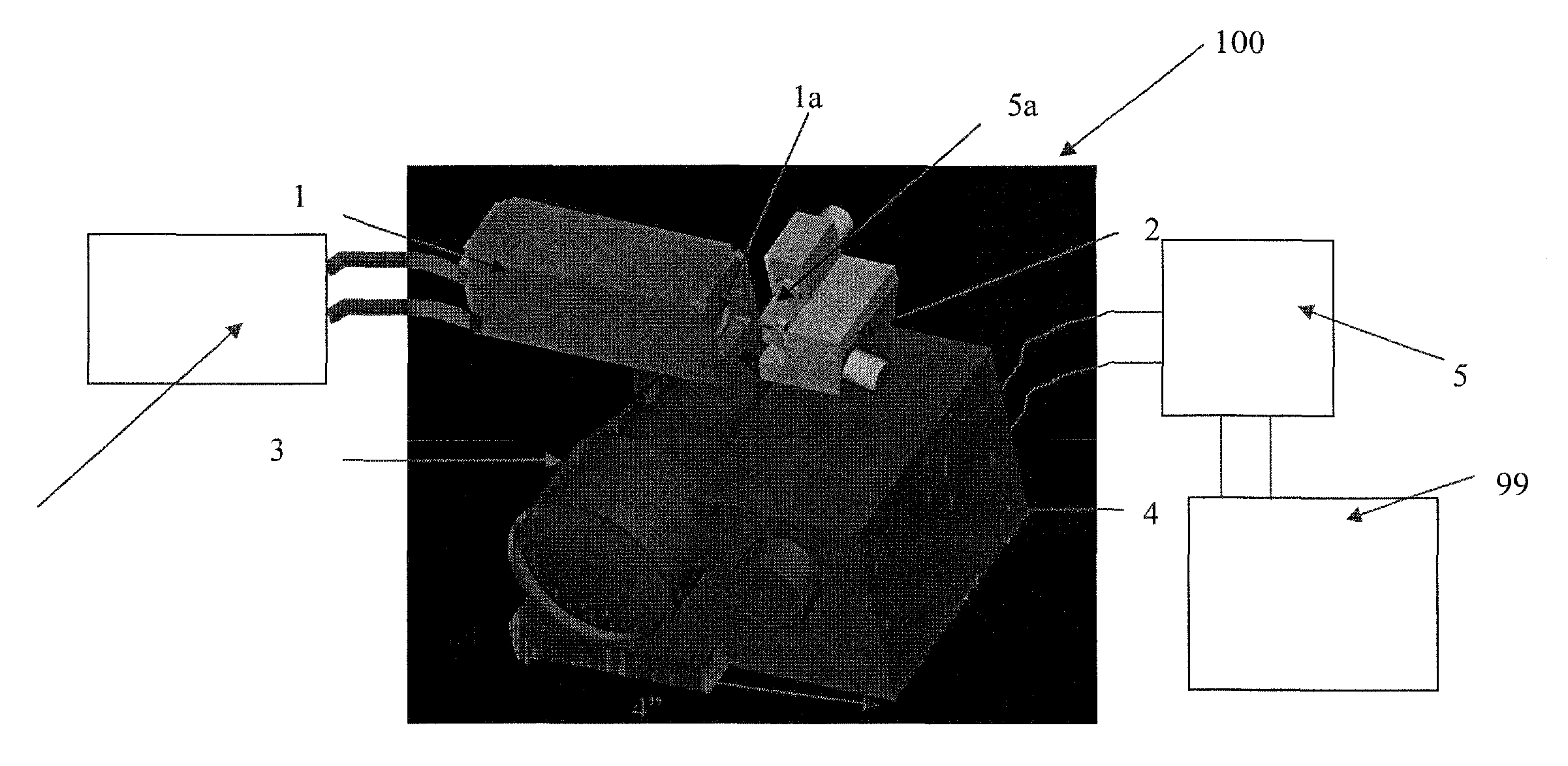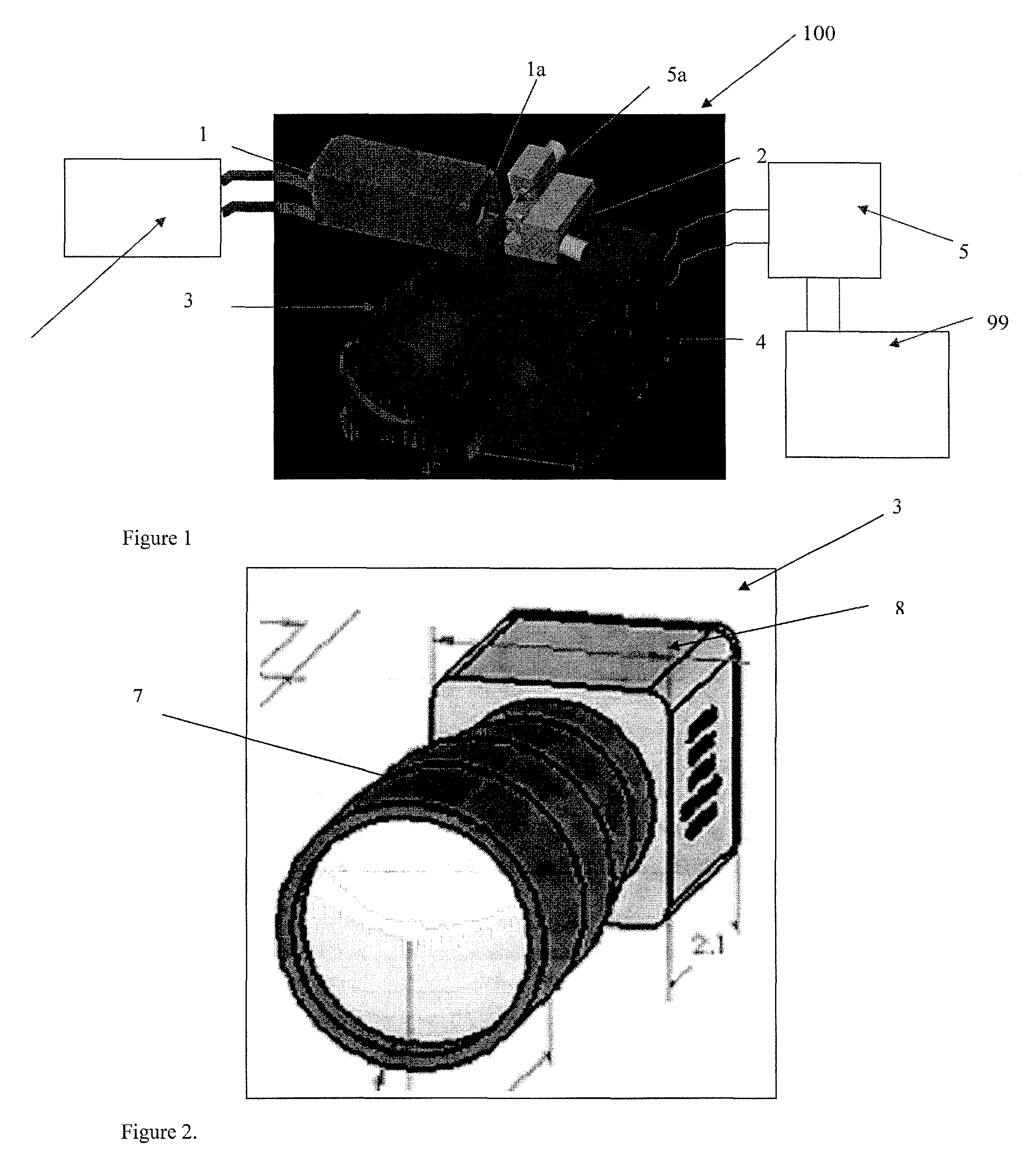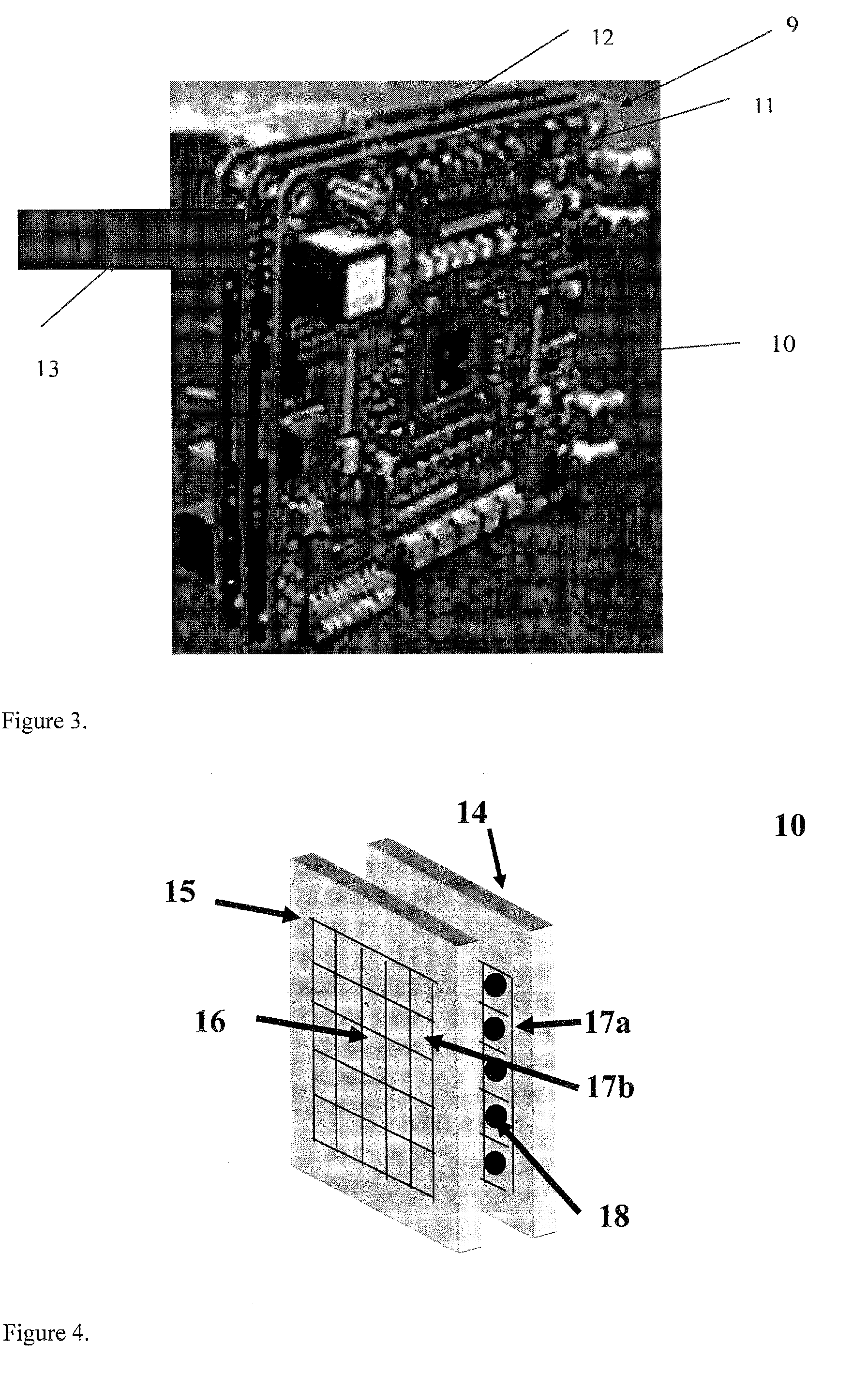Laser ranging, tracking and designation using 3-D focal planes
a focal plane and laser technology, applied in the direction of reradiation, distance measurement, instruments, etc., can solve problems such as pixel blurring, and achieve the effects of low energy requirements for operation, low weight, and mechanical simplicity
- Summary
- Abstract
- Description
- Claims
- Application Information
AI Technical Summary
Benefits of technology
Problems solved by technology
Method used
Image
Examples
Embodiment Construction
[0020]When generating a flash image with a 3-D FPA each pixel must receive enough laser energy so that a 3-D image can be generated. The farther the object of interest is from the camera the greater the output laser energy required. Since for long-range systems, cost and power is related to the laser energy, reducing the requirement for laser power is a benefit. If the object of interest is only a few pixels in size, is far away, and could be anywhere in the entire field of view of the 3-D FPA, it is most economical to narrow the transmitted laser beam to be only a few pixels in width and to scan the laser beam. Since scanning a laser beam requires only a very small, inexpensive and extremely reliable galvanometer scanner the present invention replaces the full flash ladar system by a cheaper, lower power and sometimes-lower weight and lower volume Energy-Reduced Flash Ladar System (ERFLS).
[0021]In one embodiment a 2-D sensor acquires the object of interest and passes the 2-D coordi...
PUM
 Login to View More
Login to View More Abstract
Description
Claims
Application Information
 Login to View More
Login to View More - R&D
- Intellectual Property
- Life Sciences
- Materials
- Tech Scout
- Unparalleled Data Quality
- Higher Quality Content
- 60% Fewer Hallucinations
Browse by: Latest US Patents, China's latest patents, Technical Efficacy Thesaurus, Application Domain, Technology Topic, Popular Technical Reports.
© 2025 PatSnap. All rights reserved.Legal|Privacy policy|Modern Slavery Act Transparency Statement|Sitemap|About US| Contact US: help@patsnap.com



